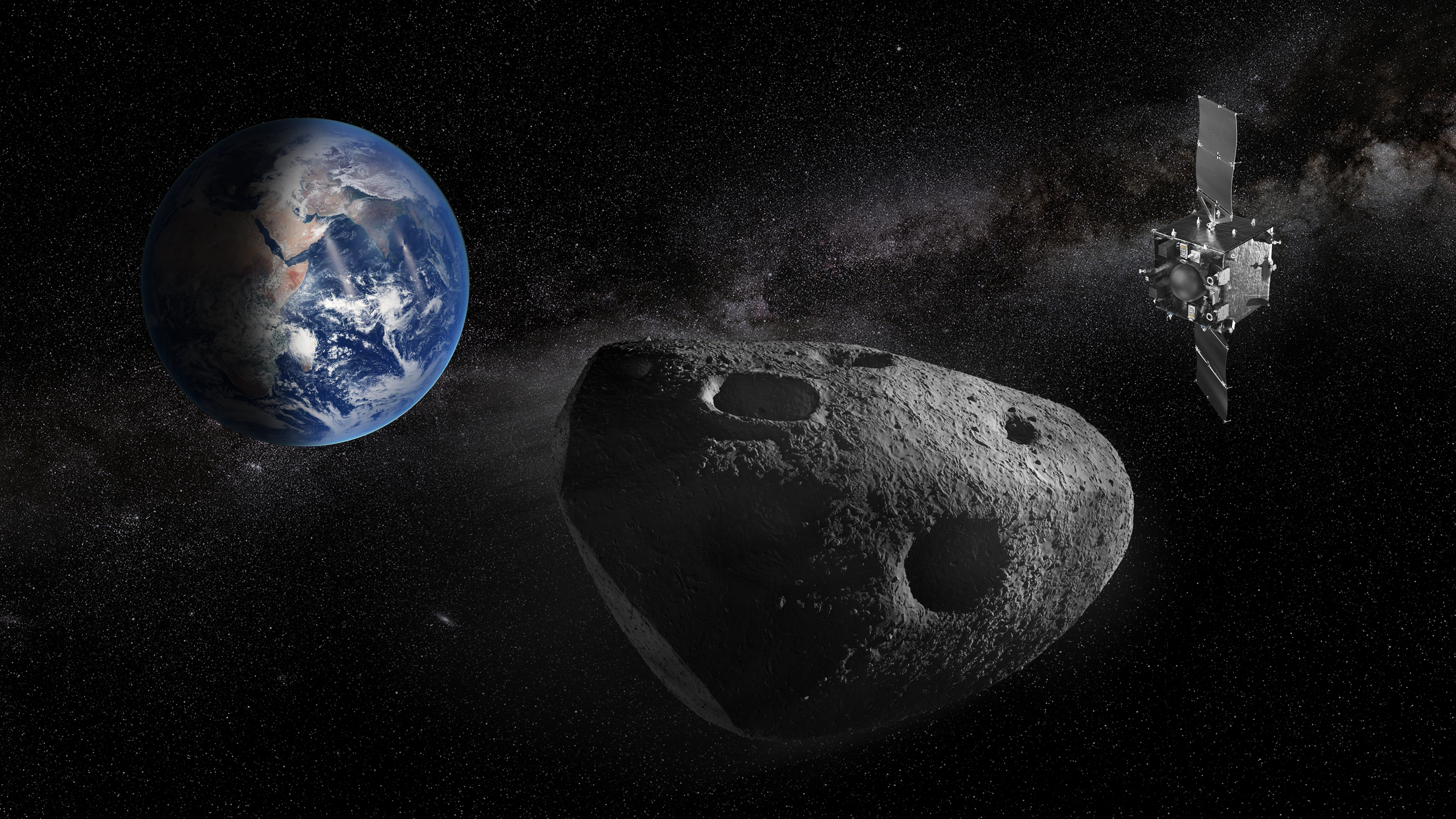
Once feared as a threat to Earth, the asteroid Apophis is now considered to pose a rare exploration opportunity — if space agencies can act in time.
The 1,100-foot-wide (340 meters) Apophis, also known as asteroid 99942, is set to make a very close, but safe, flyby of Earth on April 13, 2029. The European Space Agency (ESA) is preparing its Ramses (Rapid Apophis Mission for Space Safety) mission for a 2028 launch in order to accompany the rocky body during its close approach.
Ramses aims to conduct a before-and-after-flyby analysis of the asteroid and features such as its surface characteristics, composition, orbit and more. Apophis' gravitational interaction with Earth is expected to trigger tidal forces in the asteroid, potentially altering its surface and interior. Understanding how Apophis is affected will bring valuable insights for international planetary defense efforts.
And now, ESA plans to add a second cubesat to the mission, to attempt a landing on Apophis. It has selected the Spanish company Emxys to lead the development of what is a demanding task.
"Landing on an asteroid is very challenging," Paolo Martino, Ramses project manager, said in an ESA statement. "The irregular shape and surface properties make it difficult to identify a stable landing site, while the very weak gravity makes it hard to stay on the surface without bouncing off and drifting away."
The main Ramses spacecraft will be a modified version of ESA's Hera probe, which is on its way to the binary asteroid system Didymos to assess the effects of NASA's 2022 DART (Double Asteroid Redirect Test) impact.
Ramses' status is not secure, however, despite apparent momentum behind the mission, as it requires ESA member states to officially commit to financially backing the mission at the agency's Ministerial Council meeting in November this year.
Another agency looking at launching a dedicated mission to track and study Apophis is NASA. Scientists at the Apophis T-4 Years Workshop held in Tokyo in April urged NASA to repurpose the shelved Janus spacecraft to make a pre-Earth-encounter investigation of Apophis.
The agency, however, currently lacks the budget to carry out such a mission, according to reports.
A May 19 SpaceNews story reported that Nicky Fox, NASA associate administrator for science, said that the agency is looking into possibilities for using Janus for an Apophis mission, but stated that these depend on budgets for fiscal year 2026 and beyond. The context for this is not favorable, however. The Trump administration's 2026 budget request, issued earlier this month, calls for very deep cuts to the NASA budget, hitting science particularly hard.
A study into collaborating with non-traditional partners for the mission, meanwhile, was found to be not viable, also due to funding issues, SpaceNews reported.
NASA will have at least one spacecraft visiting Apophis, however. The OSIRIS-REx spacecraft, which collected samples from the asteroid Bennu and delivered them to Earth, is on an extended mission — named OSIRIS-APEX — and will arrive at Apophis roughly one month after the asteroid's Earth flyby.
Another visit will be made to Apophis due to a delay to the launch of a Japanese mission. DESTINY+ was scheduled to launch this year to study the asteroid 3200 Phaethon, the parent of the Geminid meteor shower. However, issues with the development of Japan's Epsilon S rocket have seen a change of plans, pushing back launch to 2028, but also affording the opportunity to make a flyby of Apophis on its way.
Scientists are calling for thorough Aphophis investigations beyond a mere flyby. "We recognize that the entire world will be watching how we collectively respond to the knowledge opportunity for planetary defense presented by the safe but very close Earth passage by the asteroid Apophis in April 2029," an Apophis T-4 workshop summary communique stated.
It backed OSIRIS-APEX, DESTINY+ and Ramses, calling these the highest-priority missions for Apophis, which should be "fully funded and supported to ensure successful achievement of their science objectives."
"We find that international collaborations and coordination are imperative for achieving Apophis 2029 science," the communique read, adding that time is of the essence for moving forward and funding missions.







